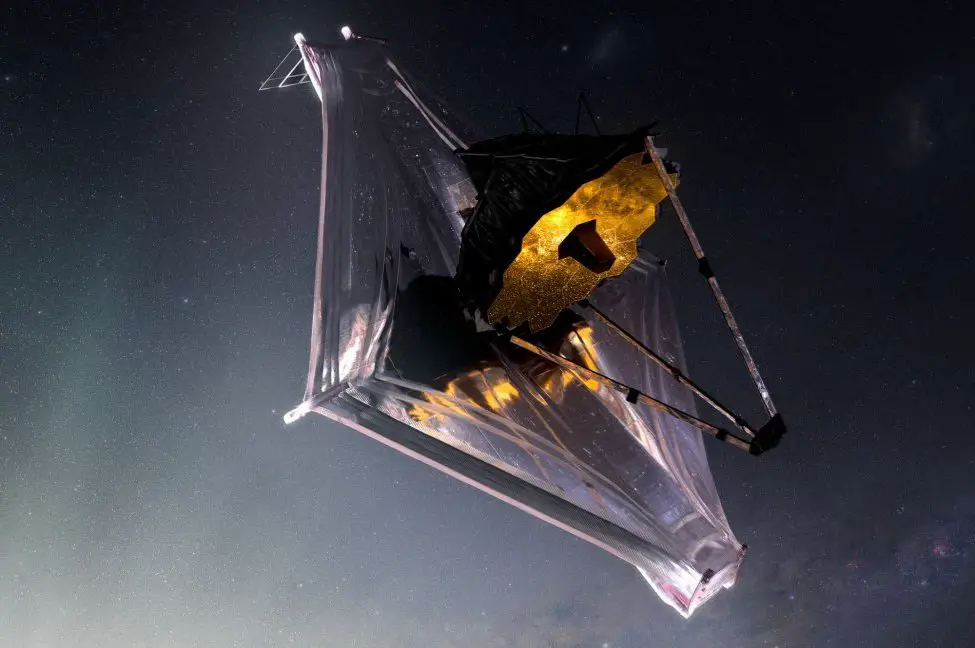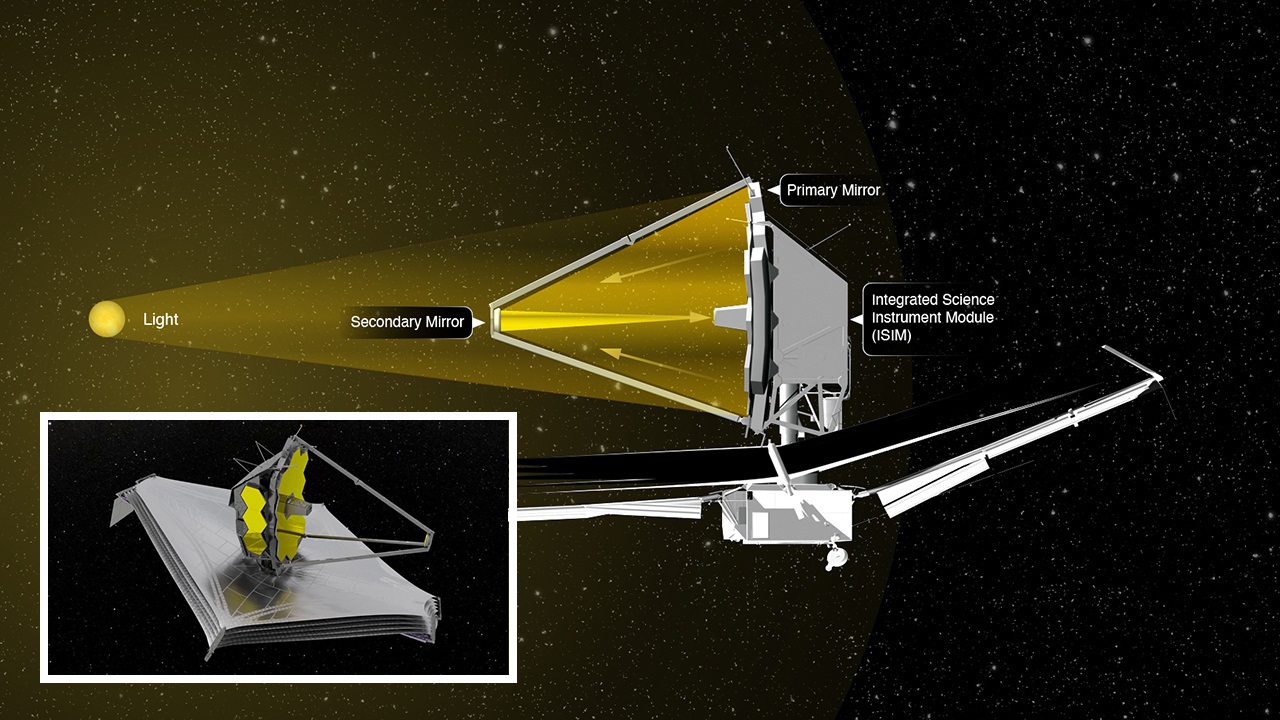The James Webb Space Telescope is slowly but steadily taking form. NASA has been deploying equipment one by one to bring the telescope into its final configuration after its successful launch on Christmas Day 2021.
Webb’s gigantic sunshield was completely deployed last evening, and now NASA is putting the secondary mirror in place – think of it as the most expensive tripod in the solar system.
Last week, the sunshield was unfurled by extending multiple supports and booms that stretched out the five-layer Kapton structure. Webb’s equipment must be maintained very cold since it is meant to make observations in the mid-infrared.
That is one of the reasons it is traveling beyond the moon’s orbit to the Earth-Sun L2 Lagrange point. It will be able to deflect solar radiation with its shield and keep its internals cold out in space.

Listen in as @NASAWebb experts give an update following today’s successful deployment of the 5-layer, tennis-court-size sunshield in space: https://t.co/Bl5VHPN1dW
~75% of 344 potential single-point failures are now behind us on the telescope's journey to #UnfoldTheUniverse. pic.twitter.com/DRCFYD2cFc
— NASA (@NASA) January 4, 2022
NASA had to use a system of cables and pulleys to tension each of the shield’s five layers in order for it to perform optimally. During ground testing, this system had problems.
Indeed, a rupture in the shield from an early test caused one of Webb’s many delays. All five layers have been effectively tensioned by the team, though. The heat dissipation of the sunshield is increased by leaving a tiny space between each layer.
The sunshield, of course, is useless if the telescope fails. In addition to Webb’s main mirror, which has huge hexagonal panels, the telescope has a number of other optical components. After completing the shield, NASA turned its attention to the secondary mirror structure.
In the same way that the main mirror was folded down for launch, so too was this accessory. The main mirror is the initial point of contact for light before it is reflected in the secondary mirror. There are two types of secondary mirrors: tertiary and steering mirrors, which guide light into the spaceship.
CONFIRMED: “The world’s most sophisticated tripod” has not only deployed but also latched!
Each of the struts for this tripod, which helps #NASAWebb’s secondary mirror direct light into the instruments, is about 25 feet long (7.6 m)! https://t.co/QTAt5yn8zF #UnfoldTheUniverse pic.twitter.com/UtAMG95c9t
— NASA Webb Telescope (@NASAWebb) January 5, 2022
The tripod has been deployed, according to NASA, but there will be another round of tests before the crew goes on to the next significant milestone of the week: unfolding the remaining parts of the primary mirror.
The 6.5-meter (21-foot) mirror includes fold-back “wings” on the left and right sides since Webb has to fold up to fit aboard an Ariane 5 rocket. Before Webb can make any observations, they will need to swing into position.
Webb should be fully operational in the next weeks, but we will not see the first photographs for months due to testing and calibration. Around the middle of the year is when you may expect it.
JWST sunshield fully deployed
On Jan. 4, controllers completed the deployment of NASA’s James Webb Space Telescope’s sunshield, enabling the mission to continue forward with the telescope’s setup.
After tensioning the first three layers of the five-layer sunshield the day before, spacecraft controllers completed tensioning the remaining two layers shortly before noon Eastern on Jan. 4. The tensioning stretches the aluminum-coated Kapton material into its final form, separating the layers and allowing the telescope and its components to cool.
After telemetry indicated the final layer was in position, Bill Ochs, JWST project manager at NASA’s Goddard Space Flight Center, informed project leaders in the mission operations center, “We have still got a lot of work to do, but getting the sunshield out and deployed is really, very huge.” “It only confirms what I have always said: the JWST crew is the greatest in NASA.”
One of the most difficult aspects of putting up the telescope was deploying the sunshield, a structure the size of a tennis court that had to unfurl in a precise way. It had multiple single-point failure possibilities and was the focus of rigorous simulations and contingency planning before to launch.
In a hurriedly organized media call after tensioning was finished, James Cooper, JWST sunshield manager at NASA Goddard, stated, “We had extremely specific forecasts” of the behavior of the sunshield deployment mechanisms. “We were ecstatic with how nicely everything lined up to that.” The tensioning process in particular exceeded our expectations.”
On the conversation, Hillary Stack, a sunshield deployment expert at Northrop Grumman, the JWST’s prime contractor, stated, “The tone was hard to express.” “There was a lot of happiness and relief.”
Controllers will now focus on the telescope mirrors once the sunshield has been deployed. Despite the fact that the original schedule called for a one-day gap between the completion of sunshield tensioning and the deployment of the telescope’s secondary mirror, NASA announced late on Jan. 4 that the secondary mirror, which is mounted on the end of a tripod, will be deployed on the morning of Jan. 5.
The deployment of a radiator on the rear of the telescope, as well as two “wings” of the main mirror, each carrying three of the 18 hexagonal mirror segments, will follow. The telescope will be completely deployed after the mirror wings are fastened in place, however, months of work will be required to align the telescope optics and commission its equipment.
The deployment of the telescope, on the other hand, is not as complicated as that of the sunshield. “In terms of moving pieces all needing to function in unison,” Cooper added, “the sunshield deployment was likely the most difficult.” “From a deployment standpoint, what is left are more traditional hinges and motors, and things like that.”

